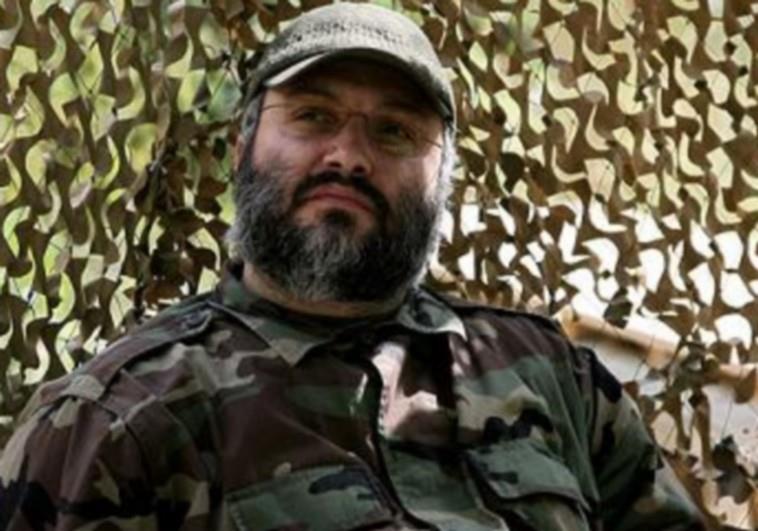The United States just sent a strong message to Hezbollah
By NADAV POLLACK/J.Post 02/07/2015
The latest revelations about US role in Mughniyeh’s assassination are aimed to demonstrate to Hezbollah that the US is still willing and able to meet Hezbollah’s operatives on this battlefield.
The latest Washington Post article about US involvement in Imad Mughniyeh’s assassination sheds light on one of the most complicated and successful operations the CIA and the Mossad have jointly executed. Starting with the specific intelligence about Mughniyeh’s daily routine, to the CIA spotter team in Syria, and the highly sophisticated explosive that was used to kill Hezbollah’s top commander, it is apparent that much planning was involved in this operation.
According to the article the CIA helped to build the bomb that killed Mughniyeh and played an integral part in the intelligence-gathering aspect of the operation.
Moreover, as a former US official stated, the Americans were the ones that first suggested killing Mughniyeh. However, as in many other ground-breaking stories about daring CIA operations, there’s more to this story. Intelligence agencies don’t just volunteer confidential information. They have an objective in mind in coming forward with this type of information.
According to some reporters, in this particular instance the motive was to show Israel, and more specifically Prime Minister Benjamin Netanyahu, that Israel needs the US to execute such complicated operations.
However, the US has better channels to pass Israel messages about security cooperation, and it seems that revealing such confidential information just to convey this message is a little bit over the top.
No, the declassification of the information about Mughniyeh’s assassination is about something else.
The message is not addressed to Israel, but rather to Hezbollah, and it goes something like this: when you decide to target our forces and citizens, we will take action. If the US wanted to show that it is still willing and able to target Hezbollah operatives, this revelation nailed it.
To be clear, Hezbollah probably knew even before this story broke that the US had something to do with Mughniyeh’s death, as it believes that every Israeli covert operation in the region is probably coordinated with the Americans. In the case of Mughniyeh, a man with much American blood on his hands, its belief that the US was involved was probably even stronger.
However, now that it is clear that the US was highly involved, not just supporting the operation but contributing valuable assets and willing to put its people in danger, Hezbollah’s perception of the extent to which the US is willing to meet Hezbollah in the field will change.
But why now? In recent years Hezbollah along with the Iranian Revolutionary Guard Corps’ Quds Force targeted mainly Israelis, including high-level officials, but also Americans, in multiple locations. These attempts were managed by Hezbollah’s External Security Organization (ESO) and Unit 400 of the Quds Force, and their motive was retaliation both for Mughniyeh’s assassination and the assassination of Iranian nuclear scientists. As counter-terrorism expert Matthew Levitt of the Washington Institute wrote, these efforts were not successful (excluding the attack on a group of Israelis in Bulgaria) mainly because “targets were poorly chosen and assaults carried out with gross incompetence.”
Some of these plots involved laying the groundwork for quick retaliatory strikes in the event that Israel or the US, or both, attacked Iran’s nuclear sites. The US focused its intelligence efforts on countering these attempts, but did not take extensive measures against the Hezbollah operatives that were behind them.
Another theater in which the US has faced Hezbollah was Iraq. During the Iraq war Hezbollah operatives were training and aiding Shi’ite militias which targeted coalition forces, on multiple occasions resulting in the loss of American lives. Hezbollah’s operations in Iraq were overseen by Unit 3800, which is responsible for training Shi’ite militias and helping them with logistics; the unit is still very much active in Iraq today.
Currently, Hezbollah and other Iranian proxies are still fighting in Iraq, mainly against Islamic State (IS), but if Iran or Hezbollah feel they can extract a price from the US over its presence in the country, they could suddenly change their aim.
Moreover, as the US is becoming more and more involved in Syria, it’s possible that the friction points between American forces and Hezbollah fighters will increase. Hezbollah’s fighters are engaging in Syria by the thousands, and if the US decides to get more involved, whether it’s increasing the training of the rebels or putting boots on the ground, it’s possible that Hezbollah will want to make this involvement pricy for the Americans.
In this scenario Hezbollah will need to take into consideration US willingness to challenge it on the battlefield.
This battlefield does not have to be a standard one in which American forces are fighting directly against Hezbollah, but could be more similar to the shadow war Hezbollah and Israel have been fighting. This behind-the-scenes struggle could mean the targeting of American bases in the surrounding countries (Turkey, Iraq, Jordan), or of Americans in countries where Hezbollah has already a logistics infrastructure.
The latest revelations about US role in Mughniyeh’s assassination are aimed to demonstrate to Hezbollah that the US is still willing and able to meet Hezbollah’s operatives on this battlefield. Whether it was someone in the White House or someone in the CIA that sent this message, it was loud and clear – when the US feels Hezbollah has crossed a red line, it will find the individual that is responsible and retaliate, Mughniyeh-style.
The author is currently a masters student at Princeton focusing on the Middle East and American foreign policy.





















